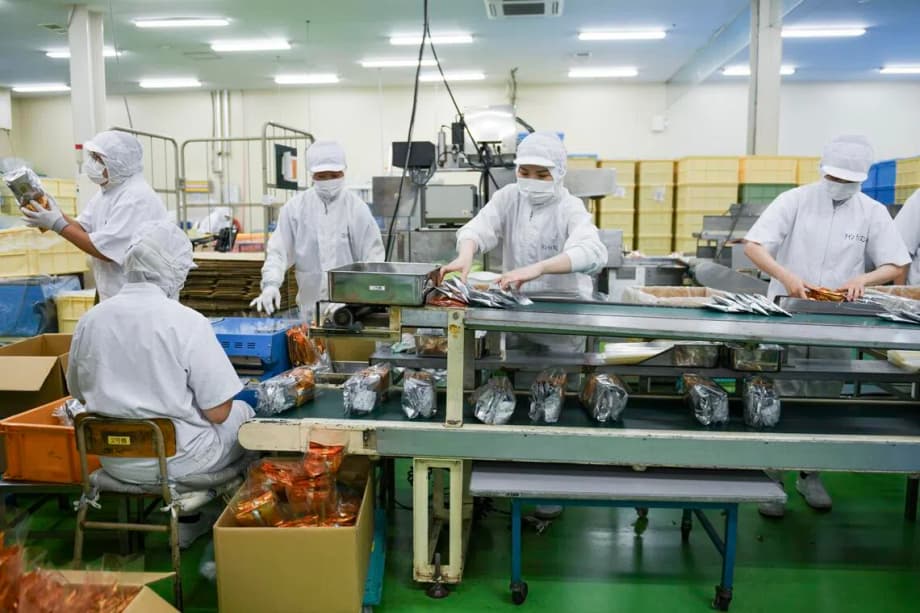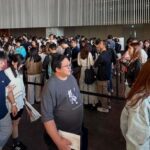Foreign residents reshape regional Japan
Foreign residents are reshaping regional Japan at a speed not seen before. Over the past decade, 10 prefectures more than doubled their non-Japanese populations, according to official comparisons of resident data from 2015 and 2025. Every prefecture recorded growth, and the national number rose to 1.78 times the level of a decade earlier. The steepest increase came in Kumamoto, where the foreign resident population more than tripled. Hokkaido and Okinawa also saw rapid gains, along with two other prefectures in Kyushu. The pattern points to new demand for workers in manufacturing, tourism, agriculture, logistics, and care services as the country grapples with low birth rates and a shrinking, aging citizen population.
Japan’s foreign resident population set a record at the end of 2024, reaching 3,768,977 people. Resident registers counted about 3.68 million on January 1, 2025, still far higher than pre-pandemic levels. Tokyo hosts the largest foreign community, with 738,946 at the end of 2024, or roughly one in five of all foreign residents in the country. Growth has been fastest in many regional prefectures that still have small foreign resident bases, which makes the uptick stand out more sharply. This is unfolding while large numbers of younger Japanese continue to move from smaller communities into bigger cities, and births fall to new lows.
Industrial investments and policy changes sit behind the trend. Taiwan Semiconductor Manufacturing Co started mass production in Kumamoto late in 2024, drawing suppliers and specialized staff. Adjustments to work and study pathways, including the long-running trainee system and the specified skilled worker visas, have widened entry routes into sectors that struggle to hire. Japanese universities and language schools attract international students, many of whom transition to work visas after graduation. The pandemic interrupted arrivals for a time, then inflows resumed strongly once border controls eased.
Where growth is fastest
Kyushu and Okinawa have emerged as growth leaders. Geography helps. Both sit close to other parts of Asia, which cuts travel time and makes recruitment and supply chains easier. The Kyushu region also has a long history as a manufacturing corridor, from automotive parts and steel to electronics and food processing. Their economies increasingly depend on foreign workers to keep plants and services running. Kumamoto stands out because of a world class chip investment that is energizing the region’s labor market, raising demand not only for engineers, but also for technicians, operators, and a wide range of support roles.
Kumamoto and the chip effect
TSMC’s factory in Kumamoto moved to mass output in late 2024. That milestone has triggered a wave of hiring around the plant and among parts makers and contractors. Semiconductor manufacturing requires stable production, precise quality control, and 24 hour operations. Foreign residents fill roles across that ecosystem. The expansion is not limited to the clean room. Housing, retail, transport, and schools feel the spillover as new families settle. Local authorities see an opportunity to reverse years of decline by keeping these newcomers beyond their first contract or student visa.
Tourist and resort magnets
Hokkaido and Okinawa have a different growth engine. Tourist towns and resort districts need seasonal and full time staff for hotels, restaurants, ski operations, and maintenance. Municipal data shows the trend is reshaping some communities. As of January, foreign residents made up more than 10 percent of the population in 27 municipalities across the country, far ahead of a national research institute’s long range projection for 2070. The village of Shimukappu in Hokkaido had the highest share at 36.6 percent. Other standouts include Akaigawa and Kutchan in Hokkaido, Ikuno Ward in Osaka, and Oizumi in Gunma, each above 20 percent. Many of these places combine industrial jobs or resort work with relatively affordable housing, which helps attract and retain foreign workers.
Who is coming and what jobs they fill
Official immigration data shows a diverse mix. At the end of 2024, the largest communities were from China, Vietnam, and South Korea, followed by the Philippines and Nepal. Nepal rose to fifth place, overtaking Brazil. Residence categories also tell the story. Permanent residents numbered 918,116. There were 456,595 people registered as trainees and 402,134 students. The trainee system and the specified skilled worker visas feed labor into key industries such as agriculture, food processing, manufacturing, construction, shipbuilding, caregiving, and hospitality. Students often work part time while studying and then move into full time roles after graduation.
These channels have evolved over the past decade. The trainee program was designed for skills transfer but became a vital pipeline for entry level labor in regions that cannot hire enough workers. The specified skilled worker system formalized pathways into sectors facing acute shortages, with clear skill and language requirements. The pandemic brought a temporary dip, yet once border rules loosened, backlogs cleared and placements surged. Many employers say foreign hires are now essential for day to day operations.
Academic analysis of census cohorts indicates that while foreign residents once concentrated mainly in major cities, rural regions began attracting more migrants after 2015. Working age and child cohorts have been rising in parts of Tohoku and Kyushu that struggle with population decline. Researchers recommend targeted support, including language education and schooling for children, and community programs for older migrants. The aim is to help families put down roots, which supports local schools and keeps services open in towns at risk of losing critical mass.
Support systems, welfare and integration
Rapid growth raises common questions about public services. National level data from the past decade suggests the overall fiscal effect on welfare is limited. While eligible foreign residents have a higher usage rate than Japanese citizens, their numbers are relatively small, and the surge in noneligible foreign residents has no clear statistical link to welfare spending or recipient counts at the prefecture level. This finding aligns with the reality that many foreign workers are young and employed, and that eligibility depends on residence status and assets.
After public debate on welfare access, the health and welfare minister stressed that foreign nationals are treated the same as citizens under the law. Introducing his position, officials said the ministry’s rules do not grant favorable treatment to foreign residents. They emphasized that screening for benefits follows the same standards for everyone. The minister set out that point in clear terms.
The eligibility and asset requirements for foreign nationals are investigated in the same manner as for Japanese citizens. Many foreign residents are not eligible because of their residency status.
Local schools, clinics, and city halls have taken on more multilingual tasks. Elementary and junior high schools in growth areas are hiring language support staff and creating bridge classes. Hospitals rely on interpreters and digital translation aids. Fire departments and police stations run outreach sessions to explain local rules and emergency procedures in multiple languages. Community centers host Japanese language lessons in the evenings so workers can attend after shifts. These services require funding and planning, and the needs differ by region and industry.
Housing and transportation have become practical pinch points in some hotspots. Resort towns with heavy seasonal demand must balance worker lodging with tourism rentals. Factory regions that add night shifts need late bus services so staff can get home after trains stop. Some local governments offer incentives for landlords to rent to foreign families and have set up help desks that guide newcomers through school registration, tax filings, garbage sorting rules, and driver license procedures. Employers that invest in housing, commuting, and language training often see higher retention, which reduces costs tied to turnover.
The pull of the megacities
Keeping new arrivals in regional prefectures is the hardest part. Authorities have programs to help international students stay after graduation. The hurdle is convincing them to build careers outside the major urban centers. Large cities offer more jobs, bigger professional networks, and deeper support systems for families. Tokyo and its surrounding prefectures house the largest share of foreign residents and continue to add more, while many rural areas still lose young Japanese to the same cities.
Pay levels and career ladders weigh heavily in decisions. So do childcare options and housing. Central Tokyo also concentrates services that matter to foreign families, including international schools, clinics with multilingual staff, and communities from the same country of origin. Regional cities can compete by pairing clear career paths with steady pay rises, affordable family housing near schools, and faster access to permanent residence for workers who commit to long term living in the area.
Some communities report smoother integration than expected when employers, town halls, and residents work together. In Okinawa, a village that hosts a science graduate university and many seaside resorts has seen its foreign share climb without widespread friction. A local official described the mood as steady and cooperative.
We have not seen an increase in problems. It seems we are coexisting well.
Regional authorities that coordinate with universities and employers often see clusters grow organically. Graduates find internships that lead to full time roles. Workers bring family members who enter local schools and settle. The economy benefits from both the labor contribution and the consumer spending that follows.
Regional snapshots
Kumamoto’s chip cluster shows how one anchor investment can multiply local labor demand. Beyond engineers, there is a need for clean room technicians, safety specialists, water treatment staff, logistics planners, and facilities maintenance teams. Restaurants and retailers that serve those workers hire more staff. Rail, port, and road improvements that support chip shipments create related jobs. This ripple effect raises the premium on thoughtful housing and transport planning so that growth does not price out existing residents.
Hokkaido’s resort belt illustrates a different path. Ski areas and mountain towns attract tourists from across Asia and beyond. That steady traffic drives demand for multilingual front desk staff, chefs, lift operators, ski instructors, and cleaners. Kutchan and nearby towns have seen year round communities of foreign residents form around these jobs. The balance between tourism and local life is delicate, so officials watch housing and school capacity closely.
Okinawa’s hospitality sector relies on foreign staff during peak seasons and for specialized roles. The presence of a graduate science university has widened the talent pool and brought more families, which helps local shops and services. Stable work contracts, clear advancement paths, and basic services in multiple languages help Okinawa retain people who might otherwise leave for the mainland.
What this shift means for Japan
Foreign residents are easing shortages that would otherwise force factories to slow lines and hotels to close rooms. Many municipalities now depend on them to keep nursing homes staffed, fields harvested, and buses on the road. Rising numbers of foreign children can stabilize schools that were facing closures. New households broaden local tax bases and support small businesses. The numbers remain modest relative to the total population, yet the concentration in rural growth points makes the effect visible on the ground.
Managing the shift well requires practical steps. Workers need fair contracts, safe housing, and access to language classes. Families need schools that can teach in Japanese while supporting students who are still learning. Employers benefit from retention, so investment in training and community ties pays off. National and prefectural programs that allow easier movement between jobs, a clearer path to long term residence, and recognition of skills can strengthen regional labor markets. Local governments that coordinate with employers, schools, and community groups tend to build trust faster, which makes it easier for newcomers to settle.
What to Know
- Ten prefectures more than doubled their foreign resident populations over the past decade, with Kumamoto more than tripling.
- All 47 prefectures recorded increases, and the national foreign resident total rose to 1.78 times the 2015 level by 2025.
- At the end of 2024, Japan had 3.77 million foreign residents, the third straight record high.
- Tokyo hosts the largest foreign community, with about 739,000 at the end of 2024.
- Kyushu, Hokkaido, and Okinawa are among the fastest growers, driven by chips, manufacturing, tourism, and services.
- Twenty seven municipalities already have foreign resident shares above 10 percent, including several in Hokkaido and one in Gunma with more than 20 percent.
- Vietnamese, Chinese, and Korean nationals form the largest groups, while Nepalese have moved into fifth place.
- Studies indicate limited fiscal impact on welfare systems and stress the need for language, schooling, and community support.
- Authorities want to retain international students and workers outside megacities, but jobs and services still pull many to Tokyo and other major metros.
- Effective integration depends on fair work conditions, stable housing, and coordination between employers, schools, and local governments.












